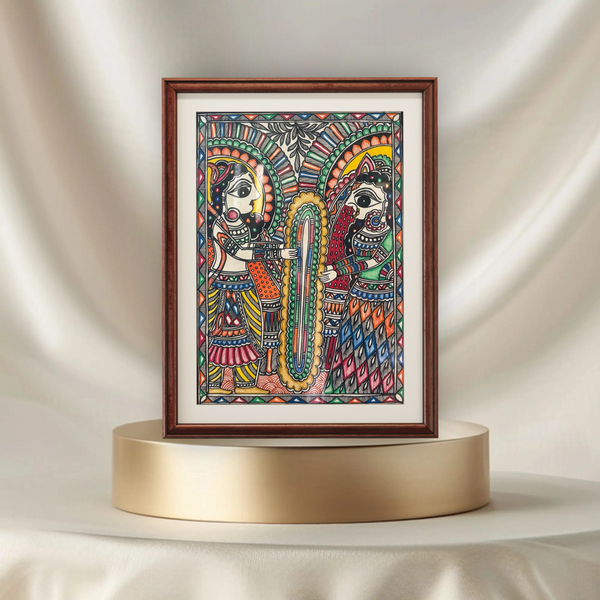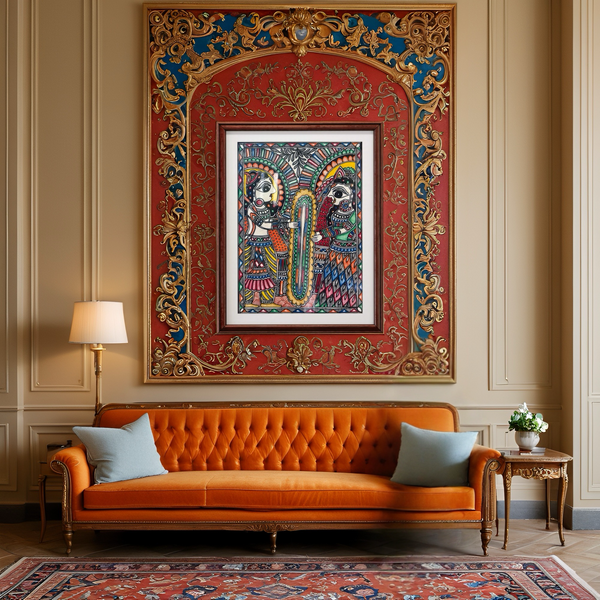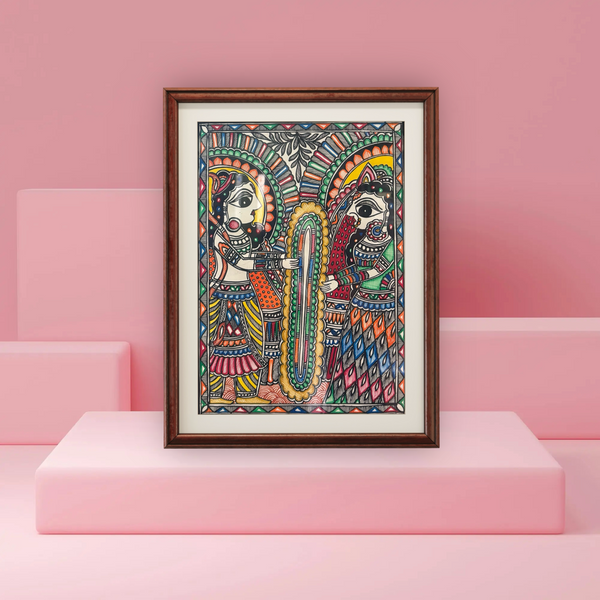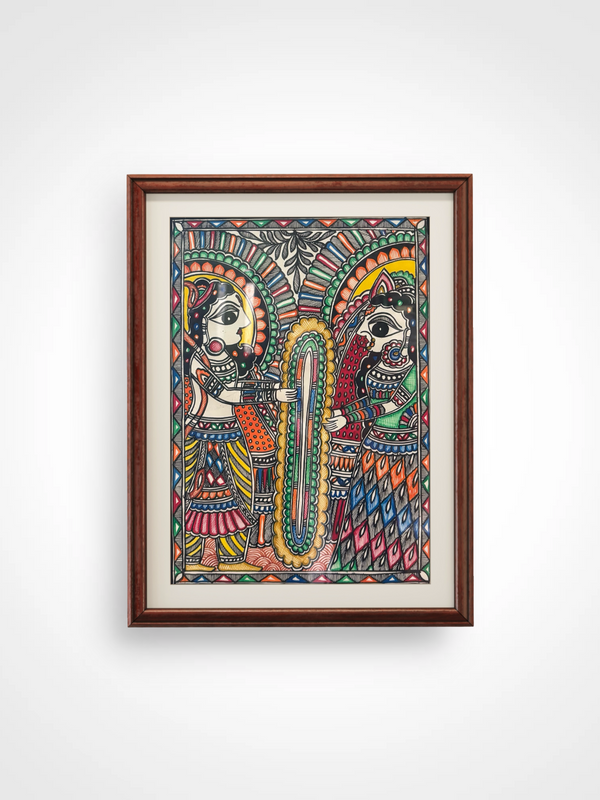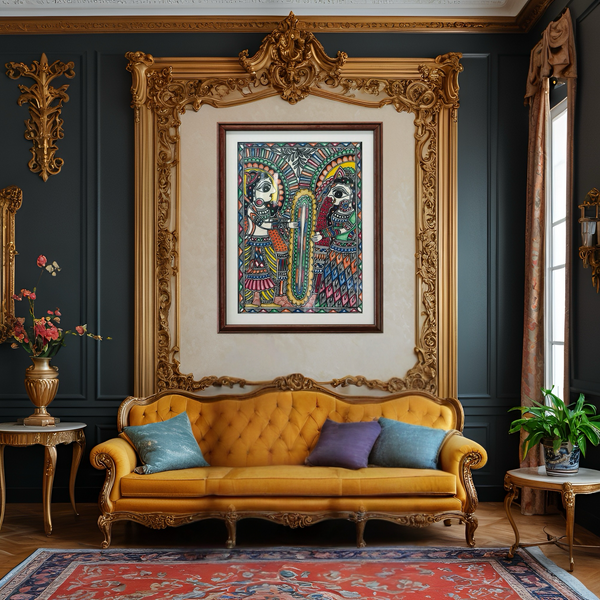
Ram Sita Varmaala Madhubani Painting
Tax included
Free Shipping on All Orders.
Express shipping by
Size impact on detailing
The painting shown in the product images is of Large Size (30" x 22"). Detailing may vary according to size, larger the size, better the detailing.
Details
- Pricing will vary depending on the chosen framing option
- Authentic hand-painted artwork in the traditional Madhubani style on handmade paper
- Created using natural, artist-prepared pigments
- Cash on Delivery (COD) is not available for medium and large paintings due to shipping and framing requirements
About the artwork
This Madhubani painting, titled Ram Sita Varmaala, depicts the divine moment from the Ramayana when Lord Rama and Goddess Sita exchange garlands during their sacred wedding ceremony. The scene symbolizes eternal love, dharma, and the auspicious bond of marriage in Hindu tradition.
The artist has beautifully captured the moment with bold outlines, intricate ornamentation, and a rich palette of reds, greens, yellows, and blues. The decorative floral borders, symmetrical patterns, and detailed attire highlight the classic elegance of Mithila folk painting.
In Mithila households, the Varmaala ceremony holds deep cultural and spiritual significance, representing not only the union of two individuals but also the blessings of harmony, prosperity, and devotion. This artwork blends timeless symbolism with aesthetic beauty, making it a treasured piece for weddings, home décor, and art collections.
Size, Framing and Customization
- Sizes: All artwork sizes mentioned include the borders of the painting but do not include the frame.
- Frames:Different frame options are available for selection. If no frame is selected, the artwork will be delivered without a frame.
- Customization & Custom Orders: Most artworks can be customized in terms of colors, size, and design elements. For fully customized artworks or special requests, please contact us and we will be happy to help you.
Shipping & Returns
Orders are processed and shipped within 3 business days. For more information, please refer to our Shipping Policy and Returns Policy pages.
Madhubani Painting Historical Context
Madhubani Painting, also called Mithila Art or Mithila Painting, is a traditional folk painting from the ancient Mithila region of Bihar, India. Known for its vibrant colors and intricate patterns, it is considered more than decoration—it brings blessings, protects against evil, and honors the Gods.
Origins & History
- Dates back to Treta Yuga, the era of Lord Rama.
- Celebrated in mythology: During Sita’s marriage with Lord Rama, Mithila was adorned with Madhubani paintings reflecting celebration, courage, and divine blessings.
- Preserved for centuries as a symbol of Bihar’s cultural heritage.
Styles of Madhubani Painting
Practiced by different sects, historically categorized into five main styles:
- Tantrik – Mystical symbols and deities
- Kohbar – Love, marriage, and fertility rituals
- Bharni – Bold, richly colored motifs
- Godna – Inspired by traditional tattoo patterns
- Katchni – Minimalist line drawings with fine detailing
Materials & Techniques
- Canvas: Walls, floors, cloth, handmade paper—no fixed dimensions.
- Colors: Natural pigments from flowers, leaves, fruits, and roots.
- Artists never erase mistakes, believing correction is inauspicious.
- Symbolism:
Fish → Fertility & good luck
Peacock → Love & religion
Serpent → Divine protection
Cultural Importance
- Madhubani paintings reflect Mithila’s mythology, rituals, and daily life.
- Rich in symbolism, each artwork represents spiritual and cultural stories.
- Considered a treasure of Indian folk art and Bihar heritage.
Geographical Roots
- Country: India
- Region: Mithila, Bihar
Contact Us
Have questions or want to chat with us? Feel free to reach out: Contact Us

